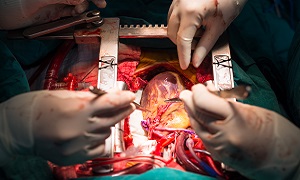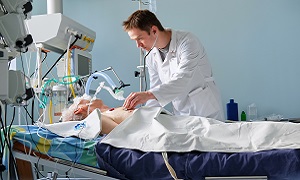Ventricular Assist Device
A ventricular assist device is a mechanical pump implanted inside the chest of a person, suffering from a weak heart or heart failure. It can help you pump blood from the lower chambers of your heart to the rest of the body. Though this device is mostly placed in the left ventricle, it can be placed in the right or even center.
A patient can have a ventricular assist device while they are waiting for a heart transplant or waiting for their own heart to become stronger so that it is able to pump blood on its own. It can also be recommended as a long-term treatment if you are having heart failure, but you are not a good candidate for having a heart transplant. However, it is to be noted that a ventricular assist device cannot replace the real heart, though it can help the heart do its job.
Purpose
A ventricular assist device can help to support the lower left heart chamber, or the lower right heart chamber, or in some cases both the lower heart chambers. It can help to relieve several symptoms, such as constant tiredness or shortness of breath.
In some rare cases, it can also help the heart recover its normal ability by giving it a chance to rest. It maintains or improves other organs as well.
This procedure is generally recommended if:
- You are waiting for a heart transplant- You may have a ventricular assist device implanted, while you are waiting for a donor heart to become available. Even if your heart is diseased, the device can assist your heart to continue pumping blood. It can also help improve the functions of other parts of your body, which might not be working properly.
- You are not eligible for a heart transplant- In some cases, this device can also be implanted if despite having a weak heart, you are not eligible for a heart transplant due to factors such as age or any other medical conditions. This is generally known as destination therapy. In some cases, this device can help you improve your conditions so that you are able to become a heart transplant candidate, or you might even keep the device as a form of permanent treatment.
- Your heart’s function can get normal once more- If your heart failure is temporary, the ventricular assist device can be recommended till your heart is again healthy enough to pump blood on its own once again.
Before the procedure
Before you undergo the procedure for implantation of the device, your doctor and treatment team will be explaining to you what you can expect before, during and after your surgery. The potential risks are going to be discussed as well. Your team will also discuss any concerns that you might have regarding your surgery. Any hair at the location of your body, where the procedure will take place, will need to be shaved off.
You will also need to arrange for someone to help you after you return home.
You will also need to discuss with your doctor when you can take your regular medications, or whether you should continue taking them before the surgery.
You might need to stop eating or drinking the night before the procedure.
Before the device is implanted, you will likely need to stay in the hospital for some days. During your stay at the hospital, you might receive other treatments for your heart problems.
Your doctor will also need to review several factors before deciding that a ventricular assist device is the most appropriate treatment for your condition. Some of these factors include:
- The severity of your heart failure or ailment
- Any other medical conditions that might be affecting your heart or quality of life
- Whether you are able to take blood-thinning medications for long periods of time
- Whether you are mentally and emotionally stable for taking care of the device
- Whether you have appropriate support from your family and friends
Your doctor might also order some tests, to ensure that you are healthy enough for the surgery. Some of these tests can include an echocardiogram, blood tests, chest X-ray, or an electrocardiogram.
Procedure
The procedure for implanting a ventricular assist device is generally an open-heart surgery which can take four to six hours. You will be sedated with general anesthesia and therefore you will be unconscious during the entire procedure, and will not feel any pain.
Then the healthcare team will connect you to a machine that will help you to breathe throughout the procedure. A tube will be run down your throat to your lungs, and then connected to a ventilator. In most cases, you may need to be connected to this ventilator for some days after the surgery.
The procedure for implanting the ventricular assist device can take as long as four to six hours.
First, a small incision will be made in the center of your chest. Your surgeon will need to separate your chest bone and open the rib cage, to operate on the heart.
You are going to be connected to a heart-lung bypass machine which will keep the oxygenated blood flowing through the body during the surgery if your heart needs to be stopped during the surgery.
Next, your surgical team is going to implant the device. An implanted left ventricular assist device has various parts. A tube carries the blood from the left ventricle of your heart to a pump. The pump delivers the blood through another tube to the aorta, the artery leading out to the body from the heart, which then delivers blood to your body. A cable inserted through the skin connects the pump to the control unit and battery pack outside the body.
Once the device is implanted and working well, your doctors are able to take you off the heart-lung bypass machine, so that the device can begin pumping blood through your heart.
After the procedure
After your procedure, you will need to stay in the intensive care unit for some time. You will receive fluids, nutrition, and medications through an IV line. Other tubes will be draining urine from your bladder, and will also be draining fluid and blood from your chest and heart.
You will be monitored by your treatment team for signs of infection or any other complications. Although your lungs might not work properly immediately after the surgery, it is likely that you are going to remain connected to a ventilator for some days after the surgery, until you are able to breathe on your own.
After you spend a few days in the ICU, you are going to be moved to a regular hospital room. The amount of time that you will need to spend in the ICU and at the hospital may vary, depending on your condition before the procedure and during your recovery.
As you continue to recovery, your nurses and other members will be helping you to become more active.
You will also receive medications and instructions from your doctor for taking them. If you have any questions regarding your medications, or you experience any side effects from them, let your doctor know.
Once you have recovered and have regained your strength, the treatment team will determine whether you should be released from the hospital. Sometimes if more time is required for your recovery, you might need to stay at a special care facility before you return home.
Make sure that you keep your follow-up appointments with your doctor and the treatment team so that they can check how well the device is working, and if it is leading to any complications. The follow-up appointments can also include a physical examination as well as several tests.
Risks
Some of the few risks that are associated with this procedure include:
- Infection
- Stroke
- Internal bleeding
- Blood clots
- Heart failure
- Device failure
- Respiratory failure
- Kidney failure



